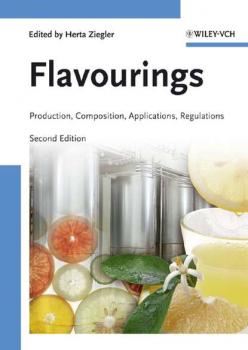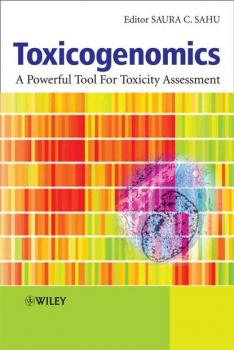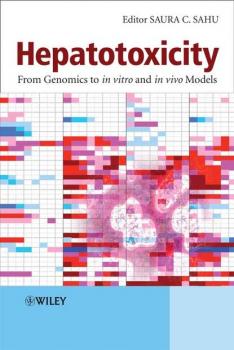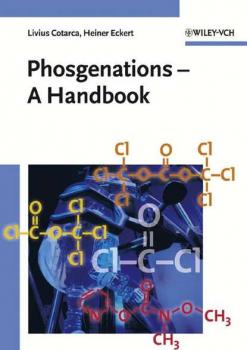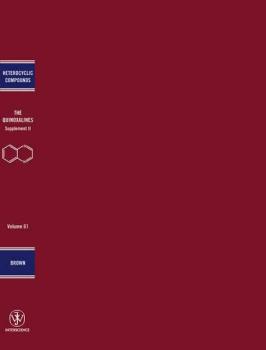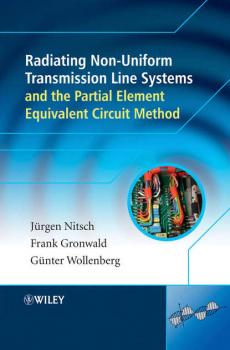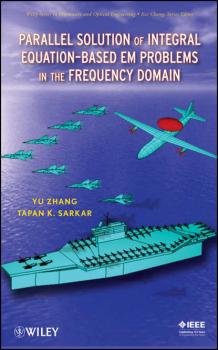ТОП просматриваемых книг сайта:
Прочая образовательная литература
Различные книги в жанре Прочая образовательная литература, доступные для чтения и скачиванияАннотация
The demand for flavourings has been constantly increasing over the last years as a result of the dramatic changes caused by a more and more industrialised life-style: The consumer is drawn to interesting, healthy, pleasurable, exciting or completely new taste experiences. This book draws on the expert knowledge of nearly 40 contributors with backgrounds in both industry and academia and provides a comprehensive insight into the production, processing and application of various food flavourings. Methods of quality control and quality management are discussed in detail. The authors also focus on conventional and innovative analytical methods employed in this field and, last but not least, on toxicological, legal, and ethical aspects. Up-to-date references to pertinent literature and an in-depth subject index complete the book.
Аннотация
Nanomaterials – substances smaller than 100 nanometers in size – have been added in recent years to an increasing numbers of consumer products used in day-to-day life; in food packaging, medical devices, pharmaceuticals, cosmetics, odor-resistant textiles and household appliances. The extensive application of nanomaterials in a wide range of products for human use poses a potential for toxicity risk to human health and the environment. Such adverse effects of nanomaterials on human health have triggered the development of a new scientific discipline known as “nanotoxicity” – the study of the toxicity of nanomaterials. Nanotoxicity: From in vivo and in vitro Models to Health Risks provides up-to-date state-of-the-art information presented by recognized experts in this emerging new field in toxicology. It discusses the safety evaluation of nanomaterials in foods, drugs, medical devices, cosmetics and other regulated products and its use in risk analysis for potential regulatory use. Topics covered include: biomarkers for nanotoxicity assessment nanotoxicity assessment by gene expression analysis in vivo and in vitro models for nanotoxicity testing mechanisms of nanotoxicity pharmakokinetics of nanomaterials nanotoxicity of foods including food processing, food packaging and food safety nanotoxicity of drugs including drug development and drug delivery nanotoxicity of cosmetics and consumer products health and environmental impact of nanotoxicity safety evaluation of nanomaterials regulatory impact of nanomaterials Nanotoxicity: From in vivo and in vitro Models to Health Risks is a valuable authoritative source of information for readers from a wide range of disciplines such as toxicology, pharmacology, drug toxicity and food and environmental sciences. The book will be useful to the research community in academia, industry, hospitals and government, as well as to government regulators and risk assessors of foods, drugs and environmental and agricultural products.
Аннотация
Toxicogenomics is the integration of genomics to toxicology. This technology is a powerful tool for collecting information from a large number of biological samples simultaneously and thus it is very useful for large-scale screening of potential toxicants. Toxicogenomics: A Powerful Tool For Toxicity Assessment provides up-to-date state-of-the-art information presented by the recognized experts, and is therefore an authoritative source of current knowledge in this field of research. The potential link between toxicology, genetics and human diseases makes this book very useful to investigators in many and varied disciplines of science and toxicology. Topics covered include: mechanistic toxicogenomics analysis and interpretation of toxicogenomic data principles of data mining in toxicogenomics design issues in toxicogenomics studies sources of variability in toxicogenomic assays Escherichia coli stress response as a tool for detection of toxicity toxicogenomics as a tool to assess immunotoxicity toxicogenomics and ecogenomics for studying endocrine disruption and basic biology use of toxicogenomics as an early predictive tool for hepatotoxicity nutrigenomics: the application of genomic signatures in nutrition-related research application of toxicogenomics in drug discovery potential uses of toxicogenomic biomarkers in occupational health and risk assessment usefulness of toxicogenomics in the regulatory environment perspectives on toxicogenomics at the US Environmental Protection Agency Toxicogenomics: A Powerful Tool For Toxicity Assessment is an essential resource for research scientists currently engaged in toxicogenomics, and will also be of interest to researchers working in toxicology, genetics, medicine, pharmacology, and food sciences, and to regulators and risk assessors of drug, food, environmental and agricultural products.
Аннотация
This book addresses all the current, up-to-date developments in this scientific discipline. Liver is the chief metabolizing site in the body, and thus, it is a major target organ for drug and chemical toxicity. Therefore, hepatotoxicity is an important endpoint in the safety evaluation of drugs and chemicals. Contributions from leading investigators in hepatotoxicity research address current developments in this scientific discipline and discuss use of current cutting edge technology such as microarrays in hepatotoxicity thus providing a better understanding of hepatotoxins, their interactions and mechanisms of action. This valuable authoritative source of information is the first book to address this topic for nearly ten years, making it an essential resource for readers from a wide range of disciplines such as toxicology, pharmacology, hepatology, drug toxicity and food science.
Аннотация
This first work to be devoted entirely to this increasingly important field, the «Textbook» provides both an in-depth and comprehensive overview of this exciting new area. Edited by Johann Gasteiger and Thomas Engel, the book provides an introduction to the representation of molecular structures and reactions, data types and databases/data sources, search methods, methods for data analysis as well as such applications as structure elucidation, reaction simulation, synthesis planning and drug design. A «hands-on» approach with step-by-step tutorials and detailed descriptions of software tools and Internet resources allows easy access for newcomers, advanced users and lecturers alike. For a more detailed presentation, users are referred to the «Handbook of Chemoinformatics», which will be published separately. Johann Gasteiger is the recipient of the 1991 Gmelin-Beilstein Medal of the German Chemical Society for Achievements in Computer Chemistry, and the Herman Skolnik Award of the Division of Chemical Information of the American Chemical Society (ACS) in 1997. Thomas Engel joined the research group headed by Johann Gasteiger at the University of Erlangen-Nuremberg and is a specialist in chemoinformatics.
Аннотация
In this manual, the authors compare the range of applications for phosgene with that of the alternative compounds, dealing in detail with the possible uses of diphosgene, triphosgene, carbon dioxide, organic carbonates, oxalylchloride and many other alternative materials used in synthesis. However, they clearly point out those cases where phosgene continues to have the advantage. The result is a mine of information for synthetic chemists working in industry and academia faced with the question of where the toxic phosgene can be replaced by an unproblematic compound – including the safety phosgenation.
Аннотация
This volume in the Chemistry of Heterocyclic Compounds series presents a comprehensive review of the quinoxaline literature from 1975 to the present (2002), updating Volumes 5 and 35. It provides an alphabetical table of known simple quinoxalines, including new compounds discussed in this volume and their physical data, as well as the pyrazines from the original volumes. Biological activities, spectral or other physical studies, and other such materials appear at appropriate points in the text. The in-depth coverage includes synthesis, reactions, spectroscopic, and physical properties for each class of compounds. Chemistry of Heterocyclic Compounds, Volume 61: Supplement II provides the most up-to-date summation of knowledge of the synthetic chemistry of quinoxalines.
Аннотация
This comprehensive resource covers the fundamentals, formulation, and biopharmaceutical issues of lipid-based drug delivery. It presents the principles of lipid absorption and covers formulation issues, such as dissolution testing and stability testing, and physiological and biopharmaceutical issues, including the role of specific enzymes, the evaluation of transport systems in the body, and the mechanisms governing the transport of water-insoluble drugs.
Radiating Nonuniform Transmission-Line Systems and the Partial Element Equivalent Circuit Method - Prof. Dr. Juergen Nitsch
Аннотация
High frequencies of densely packed modern electronic equipment turn even the smallest piece of wire into a transmission line with signal retardation, dispersion, attenuation, and distortion. In electromagnetic environments with high-power microwave or ultra-wideband sources, transmission lines pick up noise currents generated by external electromagnetic fields. These are superimposed on essential signals, the lines acting not only as receiving antennas but radiating parts of the signal energy into the environment. This book is outstanding in its originality. While many textbooks rephrase that which has been written before, this book features: an accessible introduction to the fundamentals of electromagnetics; an explanation of the newest developments in transmission line theory, featuring the transmission line super theory developed by the authors; a unique exposition of the increasingly popular PEEC (partial element equivalent circuit) method, including recent research results. Both the Transmission Line Theory and the PEEC method are well suited to combine linear structures with circuit networks. For engineers, researchers, and graduate students, this text broadens insight into the basics of electrical engineering. It provides a deeper understanding of Maxwellian-circuit-like representations of multi-conductor transmission lines, justifies future research in this field.
Информация о книге
Автор произведения Prof. Dr. Juergen Nitsch
Аннотация
A step-by-step guide to parallelizing cem codes The future of computational electromagnetics is changing drastically as the new generation of computer chips evolves from single-core to multi-core. The burden now falls on software programmers to revamp existing codes and add new functionality to enable computational codes to run efficiently on this new generation of multi-core CPUs. In this book, you'll learn everything you need to know to deal with multi-core advances in chip design by employing highly efficient parallel electromagnetic code. Focusing only on the Method of Moments (MoM), the book covers: In-Core and Out-of-Core LU Factorization for Solving a Matrix Equation A Parallel MoM Code Using RWG Basis Functions and ScaLAPACK-Based In-Core and Out-of-Core Solvers A Parallel MoM Code Using Higher-Order Basis Functions and ScaLAPACK-Based In-Core and Out-of-Core Solvers Turning the Performance of a Parallel Integral Equation Solver Refinement of the Solution Using the Conjugate Gradient Method A Parallel MoM Code Using Higher-Order Basis Functions and Plapack-Based In-Core and Out-of-Core Solvers Applications of the Parallel Frequency Domain Integral Equation Solver Appendices are provided with detailed information on the various computer platforms used for computation; a demo shows you how to compile ScaLAPACK and PLAPACK on the Windows® operating system; and a demo parallel source code is available to solve the 2D electromagnetic scattering problems. Parallel Solution of Integral Equation-Based EM Problems in the Frequency Domain is indispensable reading for computational code designers, computational electromagnetics researchers, graduate students, and anyone working with CEM software.

